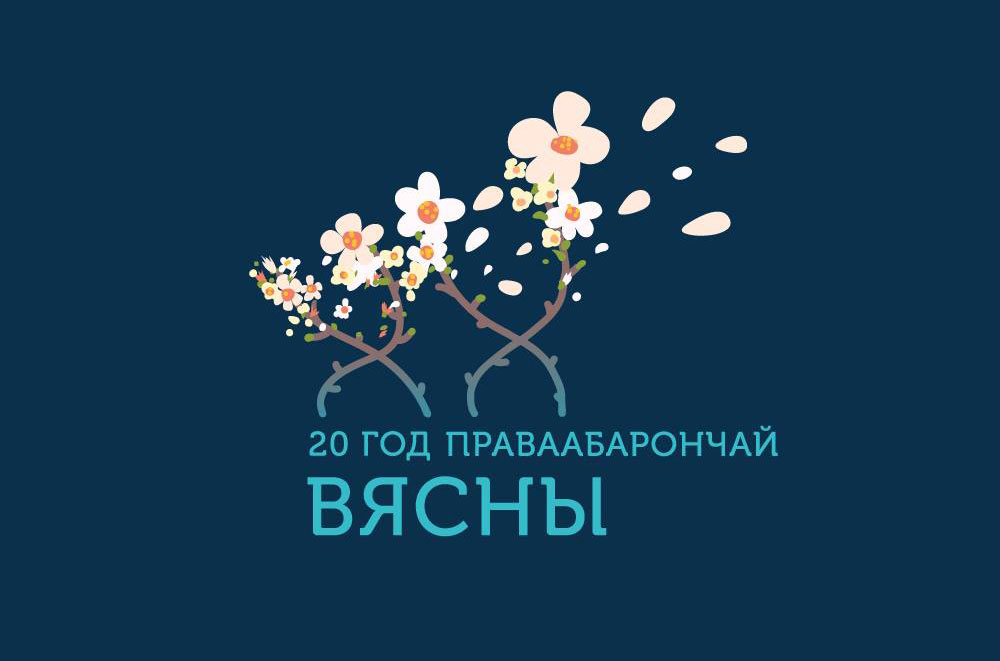Viasna. The Beginning
On 26 April 1996, several Belarusian activists founded a human rights initiative called "Viasna-96", which later became what we know today as the Human Rights Center "Viasna". On this day, the activists started searching for the protesters detained during the Čarnobyĺski šliach demonstration.
Viasna’s leader Ales Bialiatski described these events in his memoirs:
The spring of 1996 will be remembered forever for a number of large spontaneous protests, which took place in the ‘conscious’ Minsk, a riot of freedom by the disgruntled city residents. (...)
In the spring of 1996, Lukashenka decided to fight the street democracy. And after the protests of March 15 (Constitution Day), March 24 (Independence Day) and April 2 (demonstration of protest against the Belarus-Russia Union Treaty) were relatively quiet, on April 26 police received permission to use violence.
Several hundred people were arrested on 26-27 April. Yury Khadyka and Viachaslau Siuchyk found themselves in pre-trial prison, they went on hunger strike for three weeks, until they were released under the pressure of Yeltsin.
On April 27, police arrested almost the entire leadership of the BPF, including Yury Khadyka, Viachaslau Siuchyk, Liavon Barshcheuski, Vintsuk Viachorka, Viktar Ivashkevich and others. There was a feeling that the repression could be continued and we would join the prisoners. But a few days later the government decided to release Viachorka and Barshcheuski.
We had to oppose this wave of violence. Soon a group of people was gathered at the BPF office, which included Halina Vashchanka, Maya Kliashtornaya and a few more people, and started urgent actions to collect information about the detainees, search assistance to their families. Soon I received such assistance – pasta, butter, cereal – from a friend of mine, whose name is still too early to disclose. In our headquarters in the Maksim Bahdanovich Museum, we packed up these foods in plastic bags with the museum logo, and then distributed them to the victims and their families. In particular, a good pile of supplies was passed to the families of Yury Khadyka and Viachaslau Siuchyk who were still in prison.
I still have a copy of an application for a picket in front of the General Prosecutor's Office, signed by me and another member of the Minsk City Council Uladzimir Nestser, where we asked to allow us to hold a picket entitled “Stop the Persecution of Citizens for Political Reasons”. Frightened by the public activity, the authorities prevented even purely cultural events. On May 25, Maksim Bahdanovich Commemoration Day, several people were detained near his monument, while I, at that time still head of the Maksim Bahdanovich Museum, faced charges as the organizer of an ‘unauthorized event’.
This was the beginning of the Human Rights Center "Viasna". Also, I compiled a chronicle of repression, the first version of which appeared in the book “Minsk Spring 96”, and then it was regularly updated in the Bielaruskija Viedamasci newsletter that was published in emigration by Zianon Pazniak. Documentation of human rights violations became one of our key priorities.
On 15 June 1999, the organization was registered as a public association called the Human Rights Center “Viasna”. It is a nation-wide association with the central office in Minsk and regional branches in most major cities of Belarus.
A decision of the Supreme Court of 28 October 2003 wrongly deprived Viasna of state registration for participation in the observation during the presidential elections of 2001. On 6 March 2004, it became member of the International Federation for Human Rights (FIDH).


















